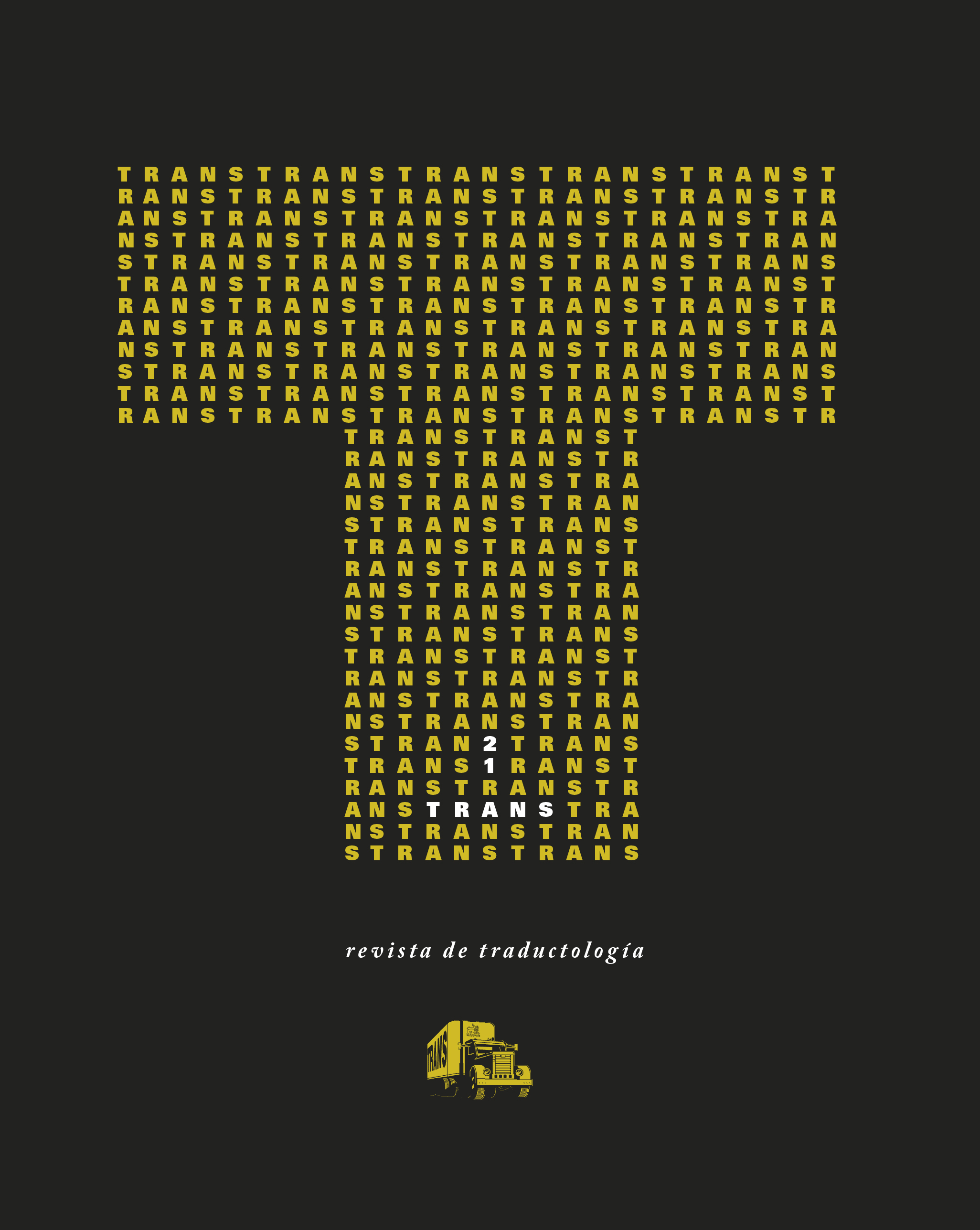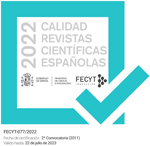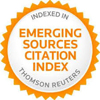Empowerment or assimilation? Study of two cases of mediated communication in Catalan education
DOI:
https://doi.org/10.24310/TRANS.2017.v0i21.3651Keywords:
Intercultural mediation, Public service interpreting, Community interpreting, Mediated communication, Schools, ImmigrationAbstract
Intercultural mediation and public service interpreting enable communication with migrated families who do not speak or understand the local languages. This can be especially important in parent-teacher meetings and when trying to establish a link between the school and the family. The present research seeks to analyse how mediated communication is developed in education settings.It focuses on two meetings in education settings in the province of Barcelona, where two educators communicated with Chinese families through intercultural mediators. Both meetings were audiotaped and the recordings have been transcribed and analysed by means of conversation analysis. The results show that despite the fact that the mediators enable communication, sometimes mediation is more oriented to the assimilation of the migrated community, and sometimes it even results in a dyadic separation, as direct communication between primary interlocutors (the educator and the mother) is not achieved or promoted.Downloads
Metrics
Publication Facts
Reviewer profiles N/A
Author statements
Indexed in
-
—
- Academic society
- N/A
- Publisher
- Universidad de Málaga
References
Angelelli, Claudia (2001): Deconstructing the Invisible Interpreter: a Study of the Interpersonal Role of the Interpreter in a Cross Linguistic/Cultural Communicative Event, tesis doctoral, Universidad de Stanford.
Angelelli, Claudia (2004): Medical Interpreting and Cross-Cultural Communication. Cambridge: Cambridge University Press.
AUSIT (2012): AUSIT Code of Ethics and Code of Conduct [consulta: 14-VII-2016] Baraldi, Claudio (2009): «Forms of mediation», Language and Intercultural Communication, 9/2, 120-137.
Bermúdez Andersen, Kira, et al (2001): Mediación intercultural. Una propuesta para la formación, Desenvolupament Comunitari; Andalucía Acoge.
Bestué, Carmen; Sofía García-Beyaert y BegoñaRuiz de Infante (2012): «Barreras lingüísticas en los servicios públicos en Cataluña: La percepción de los trabajadores», Sendebar, 23, 37 59. [consulta: 14-VII-2016].
Bolden, Galina (2000): «Toward Understanding Practices of Medical Interpreting: Interpreters’ Involvement in History Taking», Discourse Analysis, 2, 387-419.
Cambridge, Jan (2002): «Interlocutor roles and the pressures on interpreters», en Carmen Valero Garcés y Guzmán Mancho Barés (eds.), Traducción e Interpretación en los Servicios Públicos. Nuevas necesidades para nuevas realidades, Madrid: Servicio de Publicaciones de la Universidad de Alcalá.
California Healthcare Interpreters Association (2002): California Standards for Healthcare Interpreters [consulta:14-VII-2016].
Collet, Jordi y Antoni Tort (coords.): Famílies, escola i èxit. Millorar els vincles per millorar els resultats. Barcelona: Fundació Jaume Bofill. [consulta: 14-VII-2016].
Comas Sàbat, Marta; Sandra Escapa Solanas y Carlos Abellán Cano (2014): Com participen pares i mares a l’escola? Diversitat familiar i d’implicació en l’educació. Barcelona: Fundació Jaume Bofill. [consulta: 14-VII-2016].
Davitti, Elena (2012): Dialogue Interpreting as Intercultural Mediation Integrating Talk and Gaze in the Analysis of Mediated Parent-Teacher Meetings, tesis doctoral, University of Manchester.
Davitti, Elena (2013): «Dialogue interpreting as intercultural mediation. Interpreters’ use of upgrading moves in parent-teacher meetings», Interpreting, 15/2, 168-199.
Eurydice (2009): La integración escolar del alumnado inmigrante en Europa: medidas para fomentar la comunicación con las familias inmigrantes y la enseñanza de las lenguas de origen del alumnado inmigrante [consulta: 14-VII-2016].
Foulquié Rubio, Ana Isabel e Isabel Abril Martí (2013): «The role of the interpreter in educational settings: Interpreter, cultural mediator or both?», en Christina Schäffner, Krzysztof Kredens e Yvonne Fowler (eds.), Interpreting in a Changing Landscape: Selected Papers from Critical Link 6, Amsterdam; Philadelphia: John Benjamins, 203-221.
Foulquié Rubio, Ana Isabel (2015): Interpretación en el contexto educativo: la comunicación docentes-padres extranjeros, tesis doctoral, Universidad de Murcia.
García-Beyaert, Sofía y Jordi Serrano Pons (2009). «Recursos para superar las barreras lingüísticoculturales en los servicios de salud», en Joaquín Morera Montes, Alberto Alonso Babarro y Helena Huerga Aramburu (eds.), Manual de atención al inmigrante. Madrid y Barcelona: Ergon, 53-65.
García-Beyaert, Sofía (2013): Código Deontológico: Principios Éticos y Pautas de buenas prácticas para la interpretación en los servicios públicos y el ámbito comunitario. Documento inédito.
Garreta Bochaca, Jordi (2009): «Capítulo I. La comunicación escuela-familia inmigrada: puntos de encuentro y distancia comunicativa», en Carme Oliver Vera (ed.), Influencia de la comunicación familia-escuela en el progreso escolar del alumnado inmigrante. Universidad de Barcelona [consulta:14-VII-2016].
Gavioli, Laura y Claudio Baraldi (2011): «Interpreter-mediated interaction in healthcare and legal settings. Talk organization, context and the achievement of intercultural communication», Interpreting, 13/2, 205-233.
Giménez Romero, Carlos (1997): «La naturaleza de la mediación intercultural», Migraciones, 2, 125-159. Martínez Carazo, Piedad Cristina (2006): «El método de estudio de caso: estrategia metodológica de la investigación científica», Pensamiento & Gestión, 20, 165-193.
Merlini, Raffaela y Roberta Favaron (2003): «Community interpreting: re-conciliation through power management», The Interpreters’ Newsletter, 12, 205-229.
Llevot Calvet, Núria (2012): Els mediadors interculturals a les institucions educatives a Catalunya, tesis doctoral, Universitat de Lleida. [consulta: 14-VII-2016].
Oliver Vera, Carme (2009a): «Introducción. Problemática de la relación familia escuela en el momento actual», en Carme Oliver Vera (ed.), Influencia de la comunicación familia-escuela en el progreso escolar del alumnado inmigrante. Universidad de Barcelona. [consulta: 14-VII-2016].
Oliver Vera, Carme (2009b): Anàlisi de la comunicació família escola-serveis socioeducatius com a eina per millorar l’èxit escolar. La situació de les famíliesmigrades a Catalunya. Determinació de necessitats i propostes d’actuació. Informe [consulta: 14-VII-2016].
Pöllabauer, Sonja (2004): «Interpreting in asylum hearings. Issues of role, responsibility and power», Interpreting, 6/2, 143-180.
Sarabia Sánchez, Francisco José (1999): Metodología para la investigación en marketing y dirección de empresas. Madrid: Pirámide.
Vargas-Urpi, Mireia (2012): La interpretació als serveis públics i la mediació intercultural amb el col·lectiu xinès a Catalunya, tesis doctoral, Universitat Autònoma de Barcelona. [consulta: 14-VII-2016]. Vargas-Urpi, Mireia y Marta Arumí Ribas (2014):«Estrategias de interpretación en los servicios públicos en el ámbito educativo: estudio de caso en la combinación chino-catalán», Intralinea,16 [consulta:14-VII-2016].
Wadensjö, Cecilia (1998): Interpreting as interaction. London: Longman.
Downloads
Published
How to Cite
Issue
Section
License
All contents published in TRANS. Revista de Traductología are protected under the Creative Commons Attribution-NonCommercial-ShareAlike 4.0 International (CC BY-NC-SA 4.0) license. All about this license is available in the following link: <http://creativecommons.org/licenses/by-nc-sa/4.0>
Users can copy, use, redistribute, share and exhibit publicly as long as:
- The original source and authorship of the material are cited (Journal, Publisher and URL of the work).
- It is not used for comercial purposes.
- The existence of the license and its especifications are mentioned.
- ShareAlike — If you remix, transform, or build upon the material, you must distribute your contributions under the same license as the original.
There are two sets of authors’ rights: moral and property rights. Moral rights are perpetual prerogatives, unrenounceable, not-transferable, unalienable, imprescriptible and inembargable. According to authors’ rights legislation, TRANS. Revista de Traductología recognizes and respects authors moral rights, as well as the ownership of property rights, which will be transferred to University of Malaga in open access.
The property rights are referred to the benefits that are gained by the use or the dissemination of works. TRANS. Revista de Traductología is published in an open access form and it is exclusively licenced by any means for doing or authorising distribution, dissemination, reproduction, , adaptation, translation or arrangement of works.
Authors are responsable for obtaining the necessary permission to use copyrighted images.













21.png)
